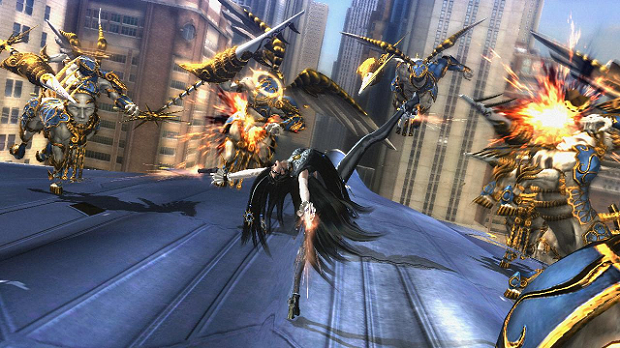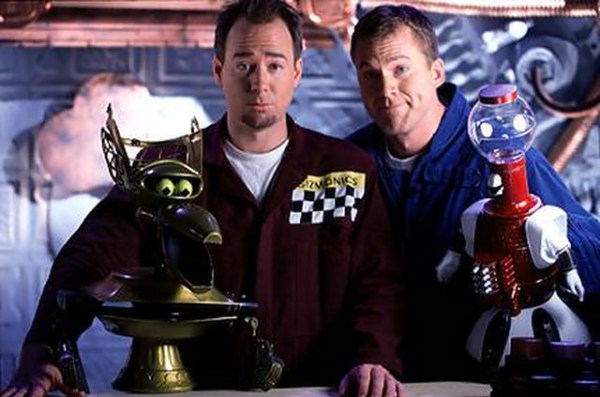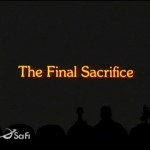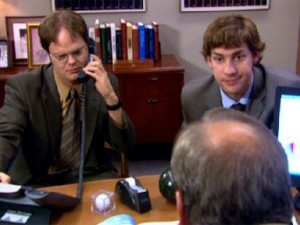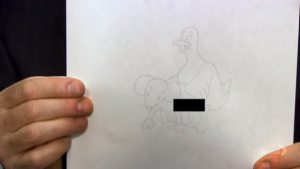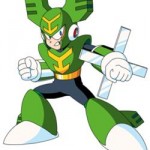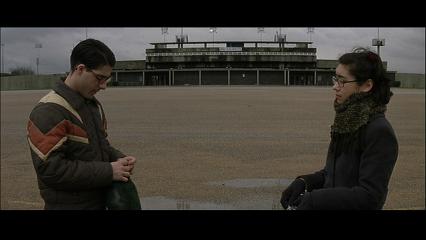Ah, the poor Wii U. It never did quite capture hearts the way nearly all of its predecessors did, and I’ll be the first to admit that it never came close to reaching its potential as a home console. Nintendo had the odd strategy of baffling consumers with it and then plopping it onto shelves in the hopes that it would somehow take care of itself.
It never did. We know that. And just four short years later, Nintendo quietly killed it off, like a cast member it could never figure out how to integrate into plots. Last night the company hosted a live debut of The Switch, the Wii U’s replacement console. It’s officially dead, and it’s never coming back.
But there is one small benefit that comes from a console with such a short lifespan: it’s pretty easy to pinpoint its highs. And because it struggled for releases I can honestly say that I’ve played an uncommonly high percentage of games available for the system.
As such, I’d like to present to you the ultimate top 10. And, no, there’s absolutely no Mario here. (Perhaps that was one of the problems?)
As secondhand Wii Us become more plentiful and less expensive, this list might help you decide what to pick up in order to build a collection. And, you know what? If you just played these games, I bet you could trick yourself into thinking this was one of the best systems yet.
I will point out before we start that downloadable games are not exempt from consideration…but none of them made the list. I don’t think there was anything in the Wii U eShop that really demanded download, the way the Wii had with World of Goo, the two classic Mega Man reprisals, the BIT.TRIP series, the Art Style series, Castlevania: The Adventure Rebirth, and lots more.
Also, it’s worth pointing out that as much as people referred to it as a “first-party system,” there’s a good amount of third-party releases on this list. I honestly didn’t expect that, but I was pleased to see it.
The Wii U had some truly great games. It’s just a shame they were destined to be overlooked.
10) Sonic Lost World
I have no idea why this game gets brushed aside the way it does. I suspect it’s just because of the (rightful) prejudice that’s developed against modern day Sonic the Hedgehog games, because Sonic Lost World is a great deal of fun, and certainly one of the best titles in the series post-Genesis. I do remember reading a lot of grumbling about how closely the game attempted to emulate (or…rip off) Super Mario Galaxy, but having played it myself, I can only conclude that those people are parroting conclusions they couldn’t have possibly reached themselves. It’s nothing like Super Mario Galaxy…unless you count all the times that Sonic runs upside down or on the sides of walls, in which case the series has been ripping off Super Mario Galaxy since 16 years before that game was released. Anyway, it’s a lot of fun, unfairly dismissed, and one that’s definitely worth appraising on its own merits. It won’t change any lives, but it’s a very enjoyable few hours.
9) Nintendo Land
No, it wasn’t Wii Sports. No, grandma didn’t want to play it. No, it didn’t show off the console’s abilities in as urgently engaging a manner. But Nintendo Land was a legitimately great pack-in. Granted, on its own it was pretty dull, but playing with others was a blast. The concept — a themepark-inspired collection of minigames based on Nintendo’s various properties — was solid, and while the games weren’t of a uniformly high quality, the experience had a lot to recommend it. There were arcade games, adventure games, racing games, and even games that were more like puzzles. It was fun, and easily the best implementation of the Miis on the entire console. What’s more, the Luigi’s Mansion game is still probably the single best use of the gamepad, allowing some genuinely tense games of hide and seek between a group of players sitting next to each other on the couch. I’ll admit that I didn’t play Nintendo Land much, but whenever my friends and I did pull it out, I was reminded of just how much fun video games can be.
8) Batman: Arkham City
I’m noticing at this very moment that this is the only game on the list that was never exclusive to the Wii U. I think that may say something. As much guff as the Wii U got for lacking exclusives, the ones it did have were pretty darned good. Batman: Arkham City was playable on all of the major consoles of its generation, and I’m not going to tell you that this is the best way to play it. I don’t know that for sure, and I certainly don’t remember the gamepad giving me much more than a (welcome) map. But I will say that the game was great, superior to its already excellent predecessor Arkham Asylum in every way…except perhaps in focus. Arkham City probably had a bit too much going on, and as much as I enjoyed playing it, I distinctly recall fatigue setting in a few times over. If you self-police, though, and refuse to let yourself get bogged down in the far too numerous sidequests, instead cherry-picking only the ones that seem most interesting to you, you’ve got a great game, with some of the most satisfying combat I’ve ever experienced. Some will tell you that Asylum is the better game. Others just as quickly point to City. Either way, though, you’re in for a soaring, dark, bone-crunching treat.
7) Bayonetta 2
I’ll admit, Bayonetta 2 makes this list due at least in part to the fact that the game came with a complete, remastered version of the first game…for no extra charge. I’d never played Bayonetta, so this was the perfect opportunity to do so. It was even better than the rave reviews led me to believe. It was brilliantly excessive and often deeply funny, with an attitude of unbridled, over the top abandon. And, somehow, the sequel had even less restraint. But what really made the game — both games — great was the combat, which seems confusing until you actually start trying the things the game teaches you. It’s the kind of game that seems to have endless combinations of buttons to remember, and which necessitates practice screens to get them right, but once you’re in the flow of an actual fight, it just…works. What seems impenetrable is revealed to be natural, and that’s a fantastic trick. To this day I’m not sure if I ever learned to play the game properly, or if Bayonetta and its sequel are just that good at making your mistakes look so stylish. Bayonetta herself is also one hell (ahem) of an engaging protagonist. Kudos to the games, as well, for taking a hyper-sexualized character and not making her seem hyper-sexualized at all. Bayonetta is just who she is. If that happens to be sexy, then so be it. You can stay there in the gutter; she’s got other places to be.
6) Rayman Legends
Rayman Legends is vastly inferior to Rayman Origins, its predecessor on the Wii. It doesn’t feel as inventive or unexpected (the uphill battle faced by all direct sequels, admittedly), and its mandatory gamepad sequences are, to be blunt, pretty awful. They entirely break the flow and pace of the game, and I can honestly say that I felt my heart sink every time I saw that I was in for another one of those levels. The fact that they seem to take the place of the mosquito-based shoot-em-up sequences from Origins made them even more disappointing; those levels broke format in a way that was exciting and fun. These just clog up the machinery. So why is it on this list? Because it’s still great. It says a lot about how fantastic Rayman Origins was that its far worse sequel is still wonderful in its own right. The levels (the standard ones, anyway) are all fun to play and full of surprises. The animation is fluid and downright gorgeous. The soundtrack is brilliant. And the musical levels? The musical levels are rightly lauded, and deeply rewarding to perfect. It’s somewhat ironic that one of the Wii U’s best games sees the gamepad being its biggest detriment. I’ll give Ubisoft credit for trying, though, and I mean that as a genuine compliment. But in the end, it was just a stone around the neck of an otherwise perfect platforming experience. And even with that hindrance, it’s a standout title of the entire generation.
5) Lego City Undercover
Grand Theft Auto is a fun series, but Lego City Undercover proves that you can have a lot of creative fun in an open world without having to lean on the appeal of mindless violence. (This isn’t meant to take anything away from Grand Theft Auto and its ilk; it’s just a genuinely nice surprise.) I adored Lego City Undercover. It was every bit what I imagined my little cities to be like when I built Lego structures as a kid. Racing around, finding new locations, tearing down and building up new buildings and objects…it was just fun. Much ado was made about excessive loading times, and that’s absolutely a fair complaint, but once you’re outdoors the entirety of Lego City is yours to explore, unbroken, and so the loading times don’t interfere with the action so much as they draw a line between chapters of the story. The writing and voice performances are also brilliantly funny, with silly jokes and sharp wit sitting side by side, peppering every conversation with laughs and making the game that much more of a delight to play. Lego City Undercover looked like a cute, simple kiddie game. But it was actually one of the best open world games I’ve ever played, and one of the few that kept me coming back long after the story was finished. I’m hoping that, one day, we can get a better-loved sequel.
4) Donkey Kong Country: Tropical Freeze
I remember when Donkey Kong Country Returns was announced for the Wii. People went ape. B-) ok but really tho, there was a huge amount of excitement about the return of the classic SNES-era platforming series. And, surprisingly, once the game was released that excitement was actually justified. Donkey Kong Country Returns wasn’t just another sequel; it was a great game. Less fanfare greeted Donkey Kong Country: Tropical Freeze. That was to be expected, as it didn’t have the immediate “wow” factor of its predecessor. But that’s also a bit disappointing, as Tropical Freeze is absolutely the better game in every regard. Its levels are more varied, its soundtrack more memorable, and its character roster doubled. (The ability to play as Cranky is every bit the reward we always knew it would be.) It also seems to have a much more rational difficulty curve. Whereas Returns hit unexpectedly hard early in the game and never really eased up after that, Tropical Freeze feels more like an adventure of satisfying ups and downs. I’ve played through this one multiple times, and I’m sure I’m not done with it. I’d even say it’s the best Donkey Kong platformer yet. And if you don’t agree, brother, you’re…bananas. B-)
3) Yoshi’s Woolly World
I expected to like this game, but I never expected to love it the way I do. I was a big fan of Kirby’s Epic Yarn, and I think most people were…even if they wished for a higher level of difficulty. I never understood that criticism; Kirby games certainly didn’t have a reputation for being anything beyond “pretty damned easy,” and, frankly, the fact that you couldn’t die didn’t make Kirby’s Epic Yarn a cakewalk; there were optional collectibles for those seeking a challenge, and many of them were very well hidden. The reason I bring this up is that Yoshi’s Woolly World not only addressed the difficulty concern — both through collectibles and tough as nails secret levels — but it’s a better game overall. What’s more, I’m not even a particularly big fan of the Yoshi series. This one won me over with its perfect blend of platforming and exploration, fairly pitched challenge, and visual aesthetic that clearly lands on the all-time-best list. It’s one of the few games from this generation that I bothered to 100%, which was surprisingly difficult to do so. And I loved every moment of it, and I’m currently playing through the entire game again with my girlfriend. Yoshi’s Woolly World could have rested on many things: its cuteness, its series pedigree, its visual invention. And yet, every aspect of the game goes at least one step beyond expectation. It’s sweet, charming, and deeply fun. It reminds me of why I fell in love with video games in the first place. And that soundtrack is just so pleasant and comforting…I can still call to mind specific songs from certain levels, which is something I’m not sure I’ve been able to do since the SNES days. Yoshi’s Woolly World is the best of classic gaming combined with the best of modern gaming. It’s this generation’s unexpected masterpiece.
2) Pikmin 3
Whenever a new Nintendo console is released, you can expect to hear the same questions about a few of its franchises. “Where’s Metroid?” “Where’s F-Zero?” “Where’s Star Fox?” Well, I don’t join in those particular choruses, but I sure as hell wonder where Pikmin is. After skipping the Wii entirely (ports excepted, only one of which, I think, was even available in this country), the series returned on the Wii U. And it wasn’t just the comforting return of a great series…it was the best title, easily. I loved Pikmin from the moment I played it on the GameCube. In fact, much of what I loved about that game came from the biggest criticism other people had about it: the strict time limit. I felt that it added some real stakes and facilitated a different kind of approach to problem solving than I would have employed otherwise. Normally I’m a careful guy; give me a strategy title, and I’m going to take a lot of turns to accomplish my goal, but I’m also going to come through relatively unscathed. Take too long to accomplish Pikmin‘s goals, though, and you suffocate on an alien planet. The game encourages and requires a sort of artful carelessness, which often fences you into having to deal with the consequences of a decision you previously made in a fit of panic. It was beautiful, it was fun, and it was my favorite GameCube game. Sure enough, the sequel eliminated the time limit, and felt inconsequential as a result. I never even bothered to finish that one, whereas I played through Pikmin many times, eventually earning the best ending. Pikmin 3 offers a great middle ground. There is a time limit, but it’s one you can extend by playing well, giving you the chance to progress more or less at your leisure…but punishing you with much tighter deadlines if you don’t take your task seriously. In short, it’s the sequel the first game always should have had. It looks better, it plays better, it sounds better, and it’s a thousand times more focused than Pikmin 2. Pikmin 3 would have been destined for this list even if it was a lazy reprise of the first game, because the first game was just that good. But what we got was a phenomenal experience, and one I’d be grateful for even if I enjoyed nothing else on the Wii U. And it’s still not the system’s best title…
1) Tokyo Mirage Sessions ♯FE
The Wii U didn’t have a distinguished life. It was never well-loved. It may not even be remembered fondly. But the games on this list aren’t good ones; they’re great ones. And yet when I sat down to write it, I know immediately what the best of the best would be. Tokyo Mirage Sessions ♯FE is my favorite game on the console, and one of my favorites in years. It’s an incredible, fun, addictive experience that didn’t get anywhere near the attention it deserved. It was also one of the few to use the gamepad in any truly meaningful way, turning it into the interface for a messenger app used by the characters. So, that’s nice. But it’s not what makes Tokyo Mirage Sessions ♯FE so great. No. That would be the incredible, colorful, memorable visuals. The absolutely stellar soundtrack, consisting of some great, original J-pop songs. The brilliant combat that occupies perfectly the space between complex and frustrating. And the characters. Oh, the characters. While Tokyo Mirage Sessions ♯FE gets flak for its story — which, to be fair, is pretty light — it’s really a game about its own characters. As much as it often seems to be otherwise, it’s not about finding and fighting a big monster. It’s about people discovering who they are. Figuring out what they want to be. Finding the right ways to get what they need. It’s a game about friendship, about support, about coming to understand each other. It’s a game about teamwork, and about the power that comes when you find yourselves pulling together in the same direction. (Ellie best girl btw) It’s an adorable, unforgettable experience, with a long campaign and lots of optional sidequests that flesh out the world and the characters that occupy it. I found myself seeking out as many things to do as possible, just to spend a little more time with the game…and that’s not something that I do often. There was a bit of disappointment surrounding this title when it was released, due mainly to the fact that it was initially pitched to the public as a crossover between the Fire Emblem and Shin Megami Tensei franchises. The result is a game that isn’t much like either, and that’s understandably disappointing for anyone who was hoping for the best of both. But Tokyo Mirage Sessions ♯FE is a near-perfect RPG in its own right, and one of the most engrossing I’ve ever played. Not because I wanted to see what happened next…rather because, for once, I didn’t want to leave.




